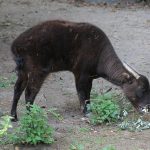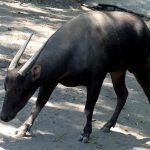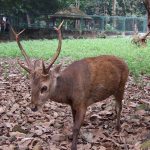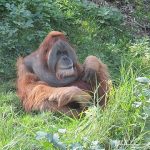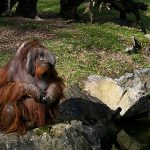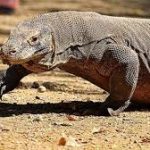Endemic Fauna
Endemic Fauna of Indonesia
Endemic Fauna
Endemic Fauna of Indonesia
 The fauna of Indonesia is characterised by high levels of biodiversity and endemicity due to its distribution over a vast tropical archipelago. Indonesia divides into two ecological regions; western Indonesia which is more influenced by Asian fauna, and the east which is more influenced by Australasian species.
The fauna of Indonesia is characterised by high levels of biodiversity and endemicity due to its distribution over a vast tropical archipelago. Indonesia divides into two ecological regions; western Indonesia which is more influenced by Asian fauna, and the east which is more influenced by Australasian species.
The Wallace Line, around which lies the Wallacea transitional region, notionally divides the two regions. There is diverse range of ecosystems, including beaches, sand dunes, estuaries, mangroves, coral reefs, sea grass beds, coastal mudflats, tidal flats, algal beds, and small island ecosystems.
The origin of fauna in Indonesia was determined by geographical and geological events on the Asian continental landmass and the Australasian continental landmass (now Australia). The island of New Guinea is connected with the present Australian continent, formerly as part of the southern supercontinent Gondwana.
This supercontinent began to break up 140 million years ago, and the new Australia-New Guinea continent (previously known as Sahul) moved towards the equator. During this period, animals from New Guinea traveled to Australia and vice versa, creating many different species living in different ecosystems.
The influence of the Asian continental landmass, on the other hand, was the result of the reformation of the Laurasian supercontinent, which existed after the break-up of Rodinia around 1 billion years ago. Around 200 million years ago, Laurasia split up, forming the continents of Laurentia (now North America) and Eurasia. Due to fluctuating sea levels, mainland Eurasia was not separated completely from the western part of the Indonesian archipelago, allowing animals from the Eurasian mainland passage to the archipelago, and new species evolved.
In the nineteenth century, Alfred Russel Wallace proposed the idea of the Wallace Line, a notional line following deep water straits dividing the Indonesian archipelago into two regions, the mainland Asian zoogeographical region (Sundaland) and the Australasian-influenced zoogeographical region (Wallacea). The line runs between Borneo and Sulawesi; and between Bali and Lombok. Although the distance from Bali to Lombok is a relatively short 35 kilometres, the fauna distribution is affected by the line. For example, a group of birds would refuse to cross even the smallest stretches of open water. A second line, lying east, known as Weber’s Line, has also been proposed to separate between “transition species” and species of predominant Australian origin.
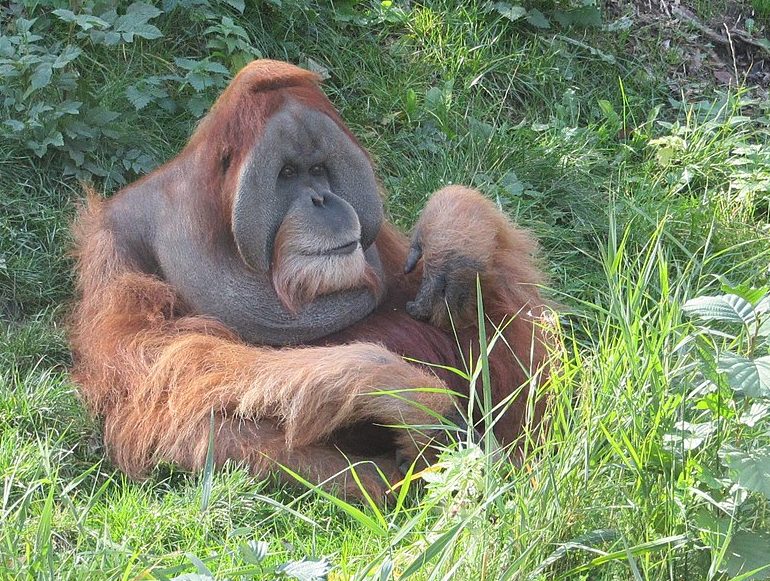 Sumatran Orangutan (Pongo abelii)
Sumatran Orangutan (Pongo abelii)
The Sumatran orangutan (Pongo abelii) is one of the three species of orangutans. Critically Endangered, and found only in the north of the Indonesian island of Sumatra, it is rarer than the Bornean orangutan but more common than the recently identified Tapanuli orangutan, also found in Sumatra. Its common name is based on two separate local words, “orang” (“people” or “person”) and “hutan” (“forest”), derived from bahasa Indonesia, and translates as ‘person of the forest’.
Male Sumatran orangutans grow to about 1.7 m (5.6 ft) tall and 90 kg (200 lb), while females are smaller, averaging 90 cm (3.0 ft) and 45 kg (99 lb). Compared to the Bornean species, Sumatran orangutans are thinner and have longer faces; their hair is longer with a paler red color.
Compared with the Bornean orangutan, the Sumatran orangutan tends to be more frugivorous and especially insectivorous. Preferred fruits include figs and jackfruits. It will also eat bird eggs and small vertebrates. Sumatran orangutans spend far less time feeding on the inner bark of trees.
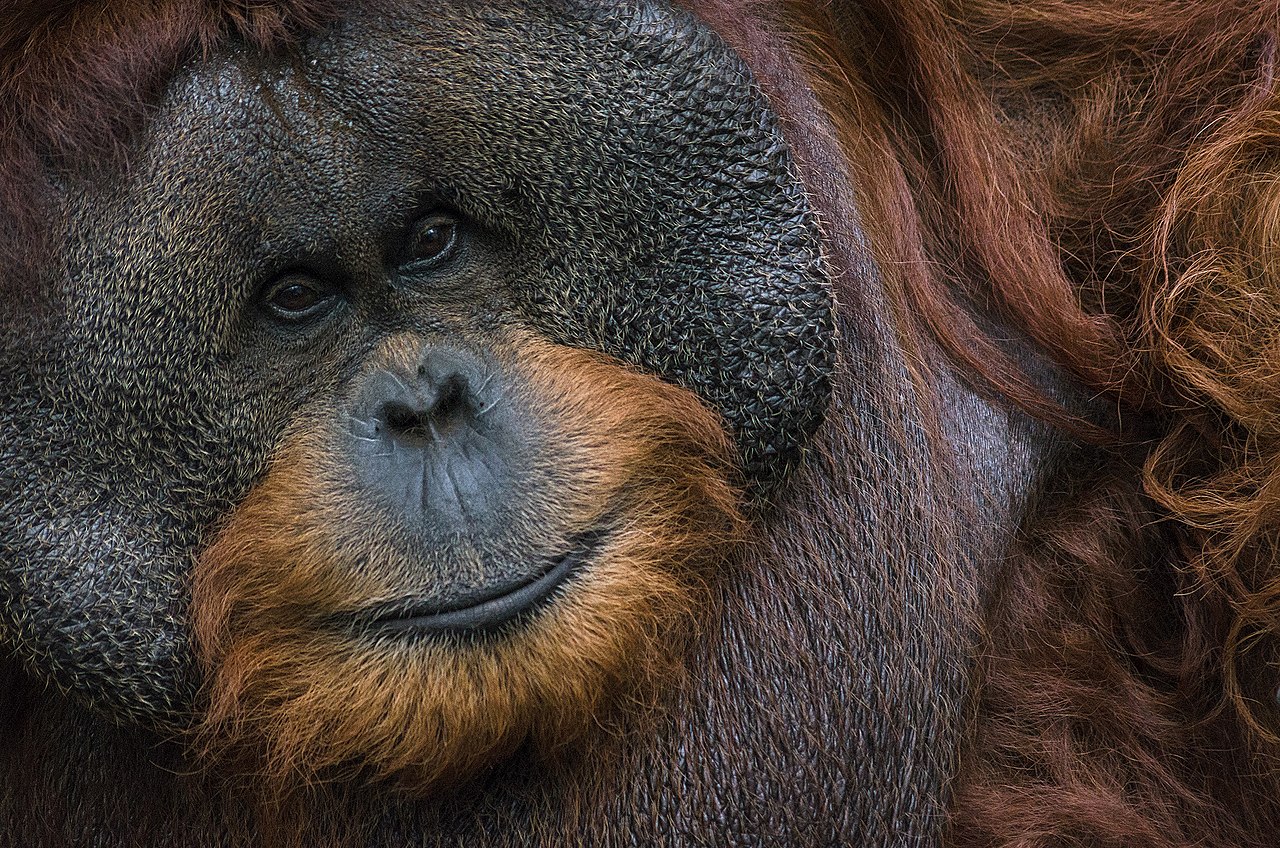 Bornean Orangutan (Pongo pygmaeus)
Bornean Orangutan (Pongo pygmaeus)
The Bornean orangutan (Pongo pygmaeus) is a species of orangutan endemic to the island of Borneo. Together with the Sumatran orangutan (Pongo abelii) and Tapanuli orangutan (Pongo tapanuliensis), it belongs to the only genus of great apes native to Asia. Like the other great apes, orangutans are highly intelligent, displaying tool use and distinct cultural patterns in the wild. Orangutans share approximately 97% of their DNA with humans.
The Bornean orangutan and the Sumatran orangutan diverged about 400,000 years ago, with a continued low level of gene flow between them since then. The two orangutan species were considered merely subspecies until 1996; they were elevated to species following sequencing of their mitochondrial DNA.
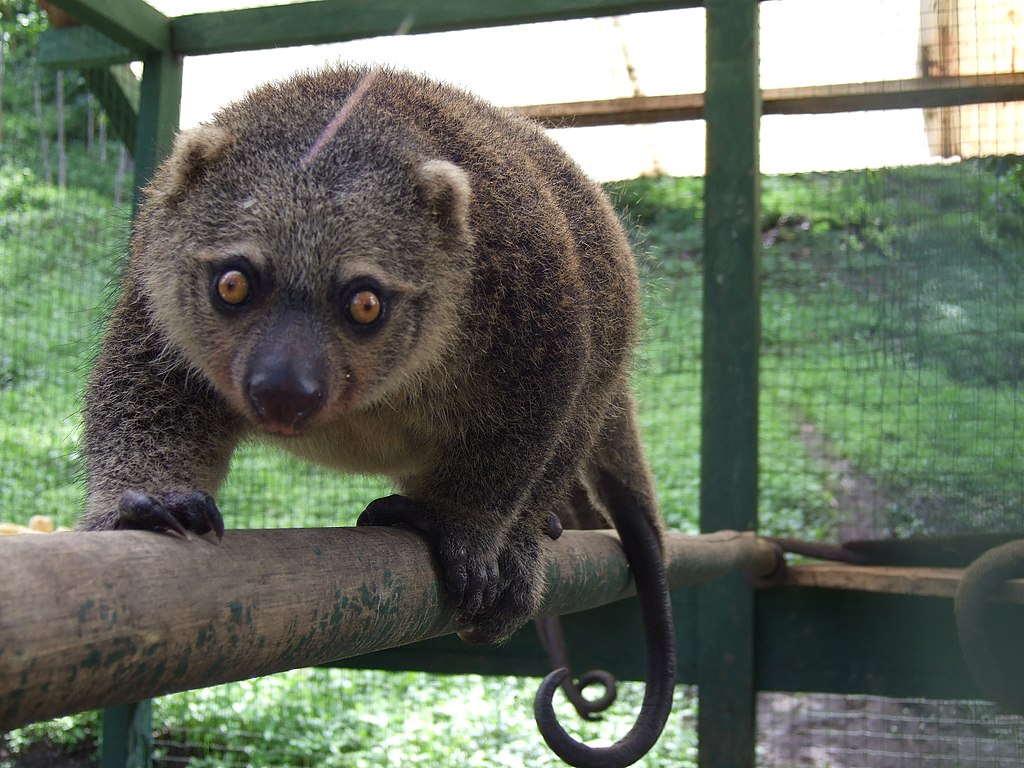 Kuskus Beruang (Ailurops ursinus)
Kuskus Beruang (Ailurops ursinus)
Kuskus Beruang, The Sulawesi bear cuscus, Sulawesi bear phalanger (Ailurops ursinus) is a member of the genus Ailurops. Kuskus Beruang is a marsupial and from the Phalangeridae family.
Kuskus Beruang is an arboreal marsupial that lives in the canopy of tropical rain forests. Almost unknown status and ecological state. Although scientists classify this population into one species, namely, A. ursinus, or melanotis, but basically Bear cuscus is a species. This genus is different, although authorities include it in a subfamily, Aiuropinae.
Kuskus Beruang is only found on a few islands in Indonesia, which are part of Asia, most of which marsupials are not found in Asia. A hypothesis states that the isolation that caused the Kuskus Beruang was found on the island of Sulawesi which occurred during the Miocene which caused the difference from the Phalangeridae family.
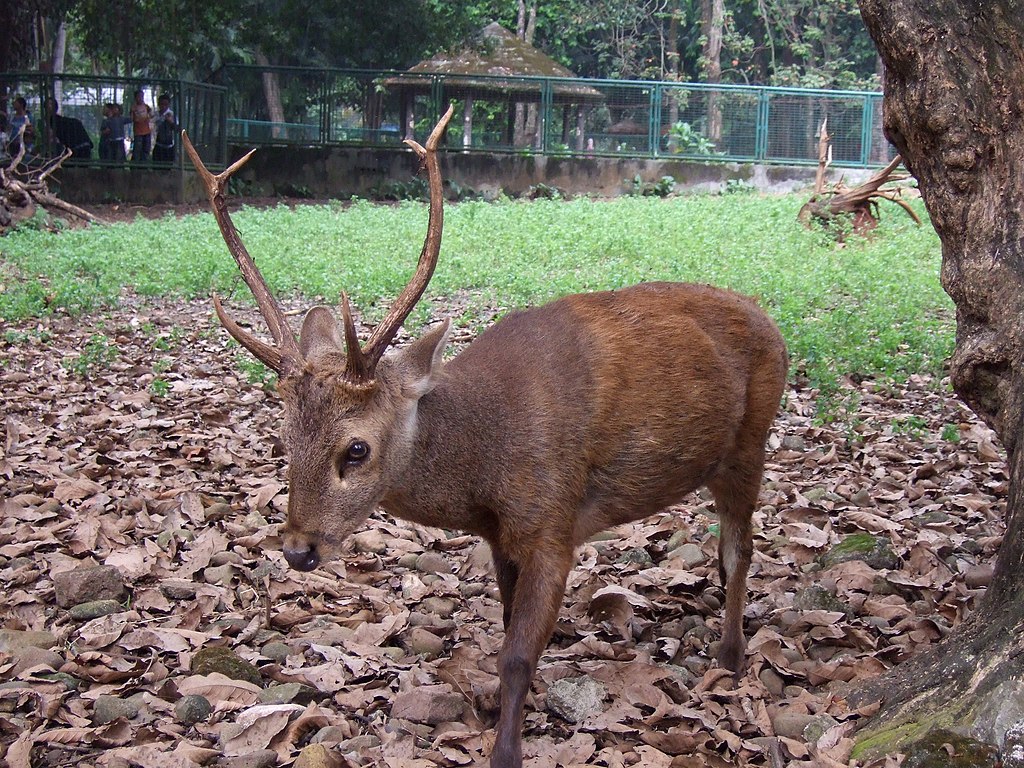 Rusa Bawean (Axis kuhlii)
Rusa Bawean (Axis kuhlii)
Rusa Bawean, Bawean deer (Axis kuhlii) is a type of deer that is currently only found on Bawean Island in the middle of the Java Sea. Administratively this island is included in Gresik Regency, East Java Province, Indonesia.
This species is classified as rare and classified as “endangered” by the IUCN. Its population is estimated to be only about 300 individuals left in the wild. Rusa Bawean, Bawean deer live in small groups which usually consist of a female deer with her cubs or a male following the female to mate. They are classified as nocturnal animals or actively looking for food at night.
The height of male Bawean deer is reported to be around 60–70 cm. Tail length 20 cm. The length of the head and body is 140 cm. Adult weight 50–60 kg. This deer is brown. The males have three-pronged horns that can grow 25–47 cm long. These horns are used by males to win over females in the mating season.
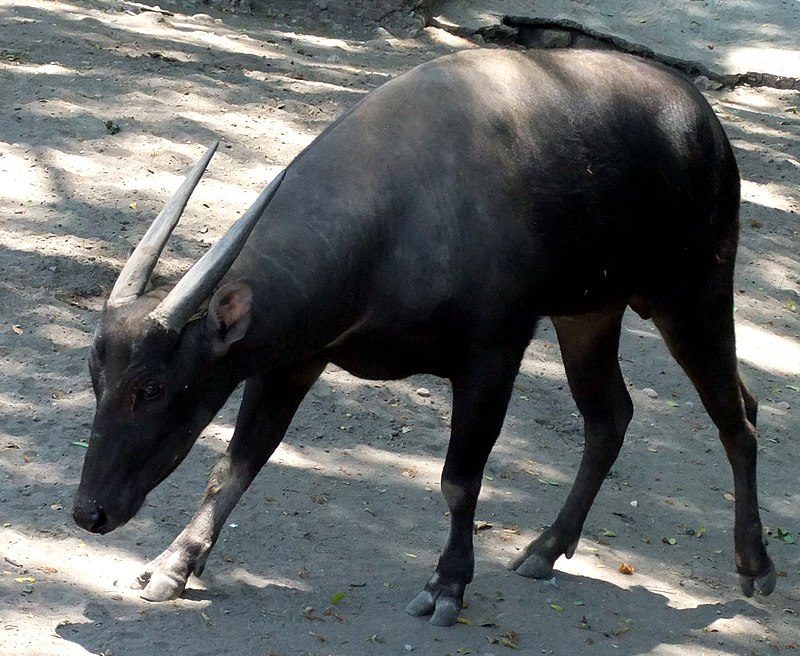 Lowland Anoa (Bubalus depressicornis)
Lowland Anoa (Bubalus depressicornis)
The lowland anoa (Bubalus depressicornis) is a species of buffalo endemic to Sulawesi. Its closest relative is the mountain anoa, and it is still a debate as to whether the two are the same species or not. It is also related to the water buffalo, and both are classified in the genus Bubalus.
The lowland anoa is a small bovid, only slightly larger than the mountain anoa. It stands barely over 90 cm (35 in) at the shoulder, and weighs between 150–300 kg (330–660 lb). It is usually solitary, living in lowland forests, browsing on plants and understory. The lowland anoa can be told apart from the other species by being larger, having a triangular horn cross-section, having sparse as opposed to thick and woolly hair, and always having white marking on the face and legs.
Both anoa species are found on the island of Sulawesi and the nearby island of Buton in Indonesia, and live in undisturbed rainforest areas. They apparently live singly or in pairs, rather than in herds like most cattle, except when the cows are about to give birth. Little is known about their life history as well. However, in captive individuals they have a life expectancy of 20–30 years. Anoa take two to three years before they reach sexual maturity and have one calf a year and have very rarely been seen to have more.
 Mountain Anoa (Bubalus quarlesi)
Mountain Anoa (Bubalus quarlesi)
The mountain anoa (Bubalus quarlesi) also known as Quarle’s anoa, is a species of buffalo endemic to Sulawesi. Its closest relative is the lowland anoa, and it is still a debate as to whether the two are the same species or not. It is also related to the water buffalo, and both are classified in the genus Bubalus.
Standing at only 70 cm (28 in) at the shoulder, the mountain anoa is the smallest of all living wild cattle, even slightly smaller than the lowland anoa. Both species typically weigh between 150–300 kg (330–660 lb). Compared to lowland anoa, mountain anoa have longer, woolier hair that moults every year, showing faint spots on the head, neck and limbs. According to the Groves (1969) the mountain anoa can be told apart from the other species by being smaller, having a round horn cross-section, thick and woolly hair, and sometimes having white marking on the face and legs. They are similar in appearance to miniature water buffalo.
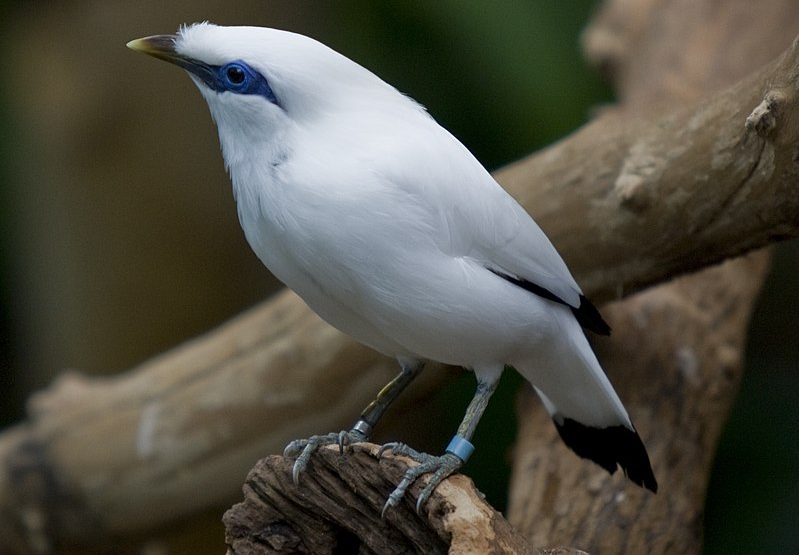 Jalak Bali (Leucopsar rothschildi)
Jalak Bali (Leucopsar rothschildi)
The Bali myna (Leucopsar rothschildi), also known as Rothschild’s mynah, Bali starling, or Bali mynah, locally known as jalak Bali, is a medium-sized (up to 25 cm (9.8 in) long), stocky myna, almost wholly white with a long, drooping crest, and black tips on the wings and tail. The bird has blue bare skin around the eyes, greyish legs and a yellow bill. Both sexes are similar. It is critically endangered and in 2018, fewer than 100 adults were assumed to exist in the wild.
The first scientific description of the Bali myna was made in 1912. Placed in the monotypic genus Leucopsar, it appears to be most closely related to Sturnia and the brahminy starling which was initially placed in Sturnus then later moved by a study in 2008 to Sturnia, as Sturnus as delimited was highly paraphyletic. The specific epithet commemorates the British ornithologist Lord Rothschild.
The Bali myna is a medium-large bird around 25 centimetres (9.8 in) in length. It is almost wholly white with a long, drooping crest, black wing-tips and tail tip. It has a yellow bill with blue bare skin around the eyes and legs. The black-winged starling (Sturnus melanopterus), a similar species, has a shorter crest and a much larger area of black on wings and tail, plus a yellow eye-ring (without feathers) and legs.
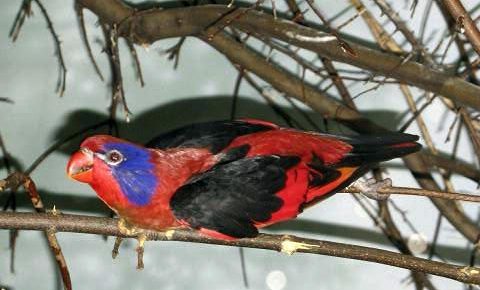 Nuri Sayap Hitam (Eos cyanogenia)
Nuri Sayap Hitam (Eos cyanogenia)
Nuri sayap hitam, Nuri merah-biak, The black-winged lory (Eos cyanogenia) also known as Biak red lory is a medium-sized, about 30 cm (12 in) long, long-tailed lory. It has a bright red plumage, black shoulder, red iris, an orange red bill and violet ear-patch behind eye. The underwings are red, becoming yellowish with black tips. Both sexes are similar.
An Indonesian endemic, the black-winged lory is distributed to forests and coastal habitat of Biak, Numfoor, and Mios Num islands in Cenderawasih Bay, Papua. It frequents and roosts in coconut trees. Due to ongoing habitat loss, small population size and hunting in some areas, the black-winged lory is evaluated as Vulnerable on IUCN Red List of Threatened Species. It is listed on Appendix II of CITES.
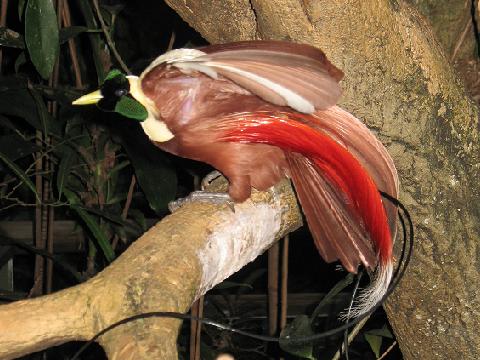 Cenderawasih merah (Paradisaea rubra)
Cenderawasih merah (Paradisaea rubra)
The The red bird-of-paradise (Paradisaea rubra, also Cendrawasih merah), is a bird-of-paradise in the genus Paradisaea, family Paradisaeidae.
Large, up to 33 cm long, brown and yellow with a dark brown iris, grey legs and yellow bill. The male has an emerald green face, a pair of elongated black corkscrew-shaped tail wires, dark green feather pompoms above each eye and a train of glossy crimson red plumes with whitish tips at either side of the breast. The male measures up to 72 cm long, including the ornamental red plumes that require at least six years to fully attain. The female is similar but smaller in size, with a dark brown face and has no ornamental red plumes. The diet consists mainly of fruits, berries and arthropods.
An Indonesian endemic, the red bird-of-paradise is distributed to lowland rainforests of Waigeo and Batanta islands of Raja Ampat, West Papua. This species shares its home with another bird-of-paradise, the Wilson’s bird-of-paradise. Hybridisation between these two species is not recorded but is expected because it is recorded for many other birds-of-paradise.
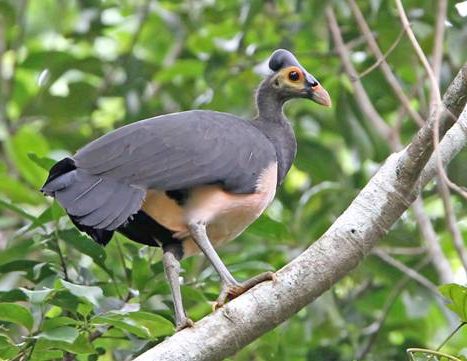 Maleo (Macrocephalon maleo)
Maleo (Macrocephalon maleo)
The Maleo (Macrocephalon maleo) is a large megapode and the only member of the monotypic genus Macrocephalon. The maleo is endemic to Sulawesi and the nearby smaller island of Buton in Indonesia. It is found in the tropical lowland and hill forests, but nests in the open sandy areas, volcanic soils, or beaches that are heated by the sun or geothermal energy for incubation.
The maleo ranges from 55–60 cm (22–24 in) long with blackish plumage, bare yellow facial skin, reddish-brown iris, reddish-orange beak, and rosy salmon underparts. The crown is ornamented with a prominent, bony, dark casque – which is the origin of its genus name Macrocephalon, meaning “large” and cephalon, meaning “head”.
The greyish blue feet have four long sharp claws, separated by a membranous web. The sexes are almost identical with a slightly smaller and duller female. Juvenile birds have largely brownish and paler heads with short blackish-brown crests and browner upperparts.
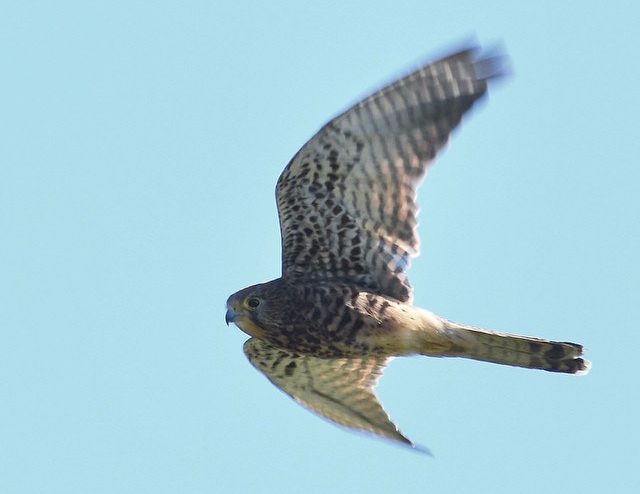 Alap-Alap Sapi (Falco moluccensis)
Alap-Alap Sapi (Falco moluccensis)
Alap-alap Sapi, The spotted kestrel (Falco moluccensis) is also known as the Moluccan kestrel, is a species of bird in the family Falconidae, of the genus Falco. This bird is a type of bird that eats small mammals, bats, birds, lizards, insects that have a habitat in open areas at all altitudes. gardens, fields, forest edges, or urban areas.
Alap-alap sapi has a small body (30 cm). Male: Dark brown upper body. Crown and upper body yellowish, striped and thick black spots. The lower body is dull yellow with thick black streaks. The tail is bluish-grey with white tips and a broad black stripe at the sub-terminals. Females: larger size, thick stripe on tail. Iris brown, bill bluish gray, tip black, sera yellow, legs and feet yellow. Flying in a circle slowly, hovering silently while flapping wings. Swoop while preying. Perched on poles, trees, rocks. Large nests of twigs, covered with leaves, epiphytes, or mosses, in isolated trees, or in tree holes. Eggs are reddish, brown speckled, total 4 grains. Breeding April-August.
Spread through Wallacea and Java, the spotted kestrel inhabits grasslands with scattered trees, lightly wooded cultivation, and the edges of primary and tall secondary forest. Along logging roads, it occasionally penetrates forests, and sometimes inhabits clearings within forested areas. It has also been known to live in areas of human habitation.
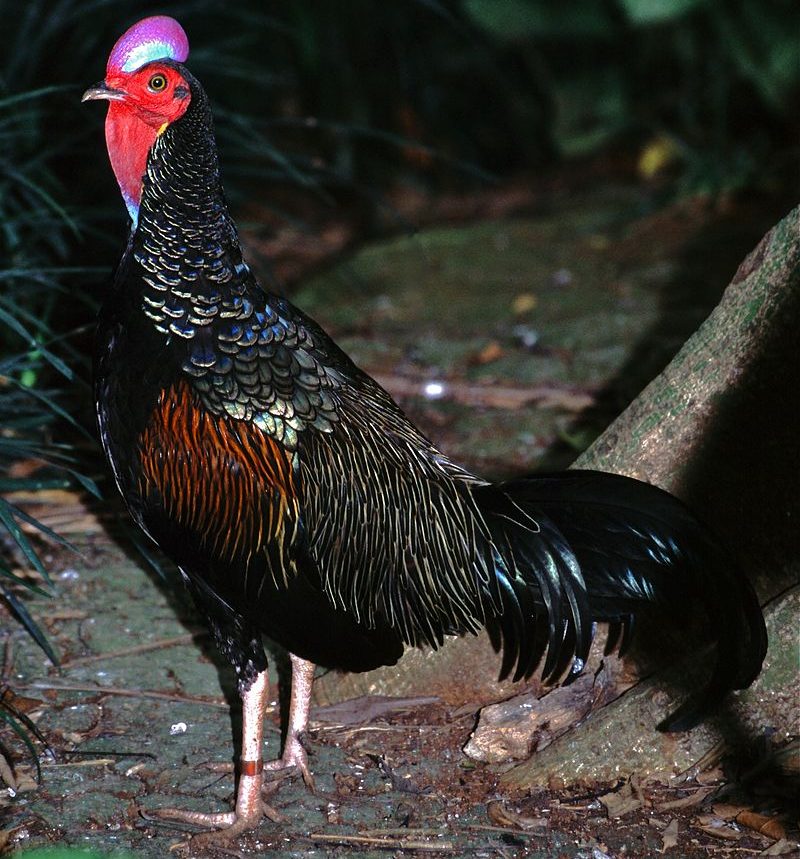 Ayam Hutan Hijau (Gallus varius)
Ayam Hutan Hijau (Gallus varius)
Ayam Hutan Hijau, The green junglefowl (Gallus varius), also known as Javan junglefowl, forktail or green Javanese junglefowl, is the most distantly related and the first to diverge at least 4 million years ago among the four species of the junglefowl. Hybridization with domestic chicken has also been reported. Green junglefowl is a medium-sized (up to 75 cm long) bird in the pheasant family Phasianidae.
The colouration of the green junglefowl is sexually dimorphic. The male’s plumage is dark and blackish at a distance. A closer view reveals an iridescent mantle of gleaming scales reminiscent in colour and pattern to those seen in the ocellated turkey and green peafowl. Each scale is vivid blue at its base and moves through various shades of gold and bronzed green. Specialized plumes framing the throat of the male green junglefowl are highly light-reflective and appear violet at the proximal and sky blue at the distal edges. The lesser coverts of the wing are a striking burnt orange with bronzed black centers. The distal edges of the greater secondary coverts are vivid ocher.
The green junglefowl is endemic to Java, Bali, Lombok, Komodo, Flores, Rinca and small islands linking Java with Flores, Indonesia. It has been introduced to the Cocos (Keeling) Islands where there is a small wild population. It is found from a natural altitude of 0–2000 m in subtropical/tropical lowland moist forest, shrubland and arable land, and has been seen flying from island to island in its native range, where it lives and breeds along coastal areas.
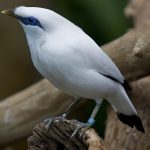
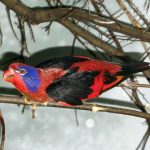
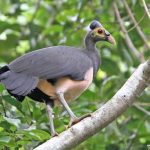
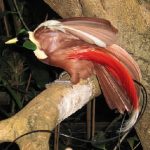
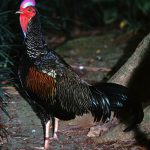

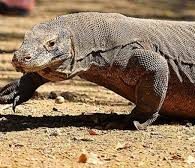 Komodo (Varanus komodoensis)
Komodo (Varanus komodoensis)
Komodo, The Komodo dragon (Varanus komodoensis), also known as the Komodo monitor, is a member of the monitor lizard family Varanidae that is endemic to the Indonesian islands of Komodo, Rinca, Flores, and Gili Motang. It is the largest extant species of lizard, growing to a maximum length of 3 metres (10 ft), and weighing up to approximately 70 kilograms (150 lb).
As a result of their size, Komodo dragons are apex predators, and dominate the ecosystems in which they live. Komodo dragons hunt and ambush prey including invertebrates, birds, and mammals. It has been claimed that they have a venomous bite; there are two glands in the lower jaw that secrete several toxic proteins. The biological significance of these proteins is disputed, but the glands have been shown to secrete an anticoagulant.
Mating begins between May and August, and the eggs are laid in September; as many as 20 eggs are deposited at a time in an abandoned megapode nest or in a self-dug nesting hole. The eggs are incubated for seven to eight months, hatching in April, when insects are most plentiful. Young Komodo dragons are vulnerable and dwell in trees to avoid predators, such as cannibalistic adults. They take 8 to 9 years to mature and are estimated to live up to 30 years.
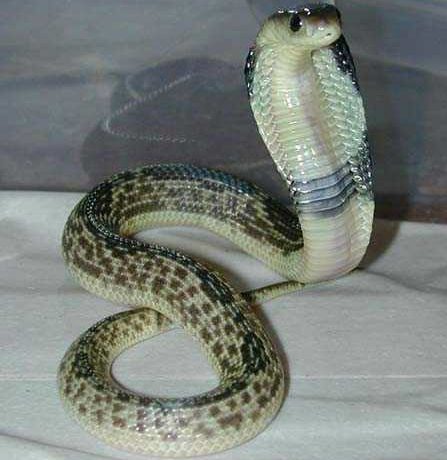 Kobra (Naja sputatrix)
Kobra (Naja sputatrix)
Kobra, The Javan spitting cobra (Naja sputatrix), also called Indonesian cobra, is a species of cobra in the family Elapidae, found in the Lesser Sunda Islands of Indonesia, including Java, Bali, Lombok, Sumbawa, Flores, Komodo, and others.
Naja sputatrix is classified under the genus Naja of the family Elapidae. It was first described by German entomologist, herpetologist, ornithologist, and lawyer Friedrich Boie in 1827. The generic name Naja is a Latinisation of the Sanskrit word nāgá (नाग), meaning “cobra”. The specific epithet sputatrix comes from the Latin word sputator, which means “spitter”.
The Java spitting cobra is a medium to large sized snake and has long cervical ribs, capable of expanding to form a hood when threatened. The body of this species is compressed dorsoventrally and posteriorly cylindrical. The average length of an adult is 1.3 metres (4.3 ft), but they can grow to a maximum of around 1.85 metres (6.1 ft). The head is elliptical, slightly different from the neck with a short rounded snout and large nostrils. Its eyes are of moderate size, with round pupils. The dorsal scales are smooth and very oblique. Dorsal scale count is usually 25–19. Some colouration and pattern differences occur between Javan specimens and those from the other islands where this species occurs. Javan adults are usually uniform yellowish, brown or blackish in colour, while juveniles often have throat bands and lateral throat spots. Specimens do not always have hood marks, but when there is a mark, it is most often chevron-shaped.
 Kura-kura leher ular Rote (Chelodina mccordi)
Kura-kura leher ular Rote (Chelodina mccordi)
Kura-kura leher ular Rote (Chelodina mccordi), The Roti Island snake-necked turtle, also commonly known as McCord’s snakeneck turtle, is a critically endangered turtle species from Rote Island in Indonesia. Chelodina mccordi belongs to the genus Chelodina (Australian snake-necked turtles) within the family Chelidae (Austro-South American side-necked turtles).
Chelodina mccordi was originally described from Rote Island but was later split into three subspecies. Chelodina mccordi rotensis from eastern Rote and Chelodina mcordi timorensis from Timor. In a recent paper the eastern Rote form was found to be identical to the western form and they were synonymised. This leaves the species with two subspecies one on Rote Island and one on Timor.
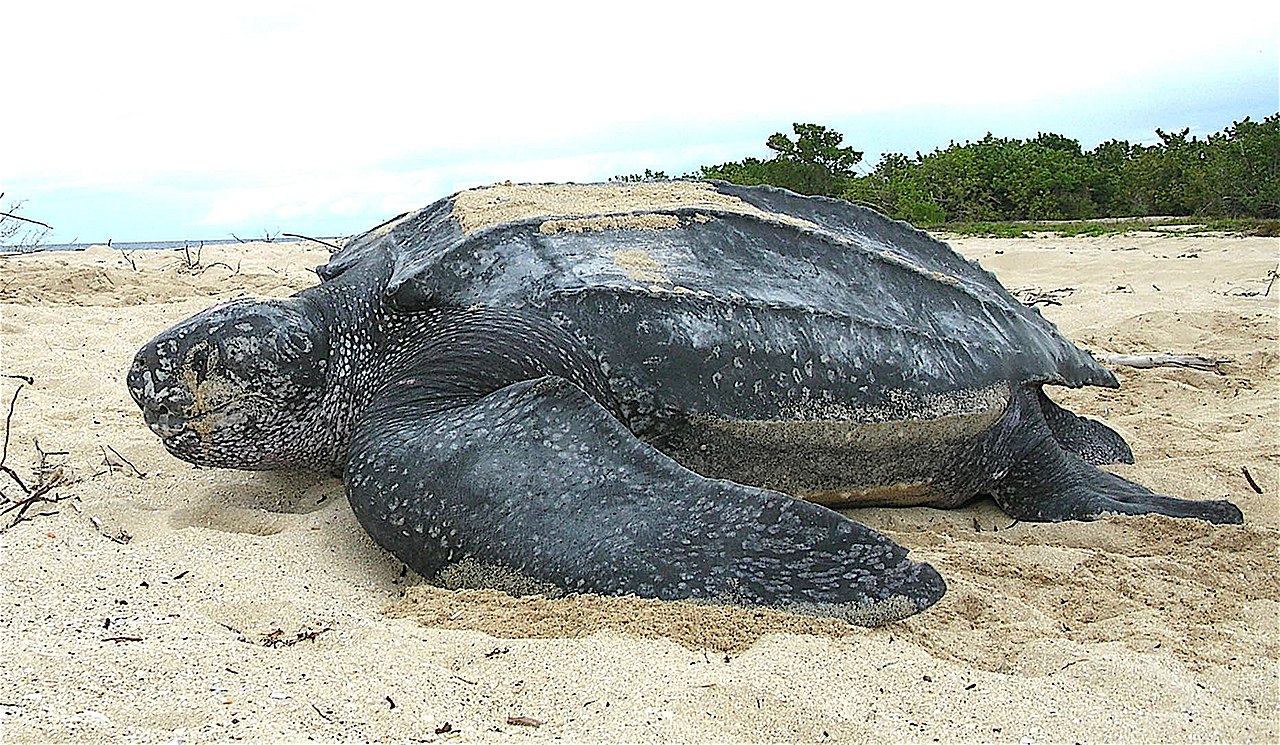 Penyu belimbing (Dermochelys coriacea)
Penyu belimbing (Dermochelys coriacea)
Penyu belimbing (Dermochelys coriacea), or The leatherback sea turtle, sometimes called the lute turtle or leathery turtle or simply the luth, is the largest of all living turtles and the heaviest non-crocodilian reptile, reaching lengths of up to 1.8 metres and weights of 500 kg. It is the only living species in the genus Dermochelys and family Dermochelyidae. It can easily be differentiated from other modern sea turtles by its lack of a bony shell; instead, its carapace is covered by oily flesh and flexible, leather-like skin, for which it is named.
Leatherback turtles have the most hydrodynamic body of any sea turtle, with a large, teardrop-shaped body. A large pair of front flippers powers the turtles through the water. Like other sea turtles, the leatherback has flattened forelimbs adapted for swimming in the open ocean. Claws are absent from both pairs of flippers. The leatherback’s flippers are the largest in proportion to its body among extant sea turtles. Leatherback’s front flippers can grow up to 2.7 m (8.9 ft) in large specimens, the largest flippers (even in comparison to its body) of any sea turtle.
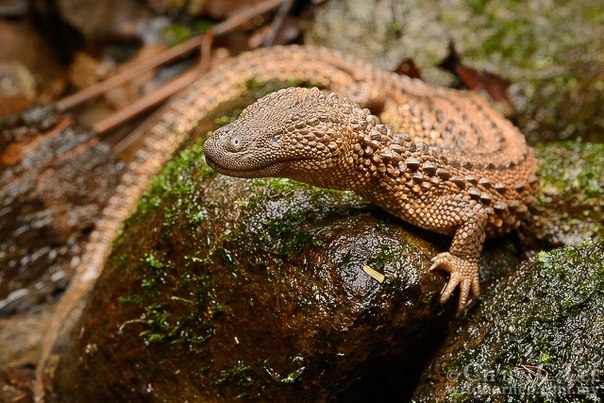 Biawak tanpa telinga (Lanthanotus borneensis)
Biawak tanpa telinga (Lanthanotus borneensis)
Biawak tanpa telinga (Lanthanotus borneensis), or an earless monitor lizard, is a semiaquatic, brown lizard native to the Southeast Asian island of Borneo. It is the only living species in the family Lanthanotidae and it is related to the true monitor lizards.
Earless monitor lizards have a cylindrical body, long neck, short limbs, long sharp claws, small eyes, semitransparent lower eyelids, and six longitudinal rows of strongly keeled scales. Despite the name, they are capable of hearing, although lack a tympanum, an ear opening and other externally visible signs of ears. The upperparts are orangish-brown, and the underside is mottled dark brown and whitish, pale yellowish, ochre or rusty.
The tail is prehensile and if it is lost, it is not regenerated. The skin is shed infrequently, possibly less than once a year. There are both reports of the skin shedding in one piece (similar to snakes), or in smaller pierces (as typical of lizards). Overall the sexes are alike, but males have a distinctly broader head and broader tail base than females. The differences between the sexes are clearly noticeable from an age of about three years. They sometimes oscillate the throat (similar to frogs) and the forked tongue is sometimes flicked (similar to snakes). They can make a gentle, squeaky vocalization.
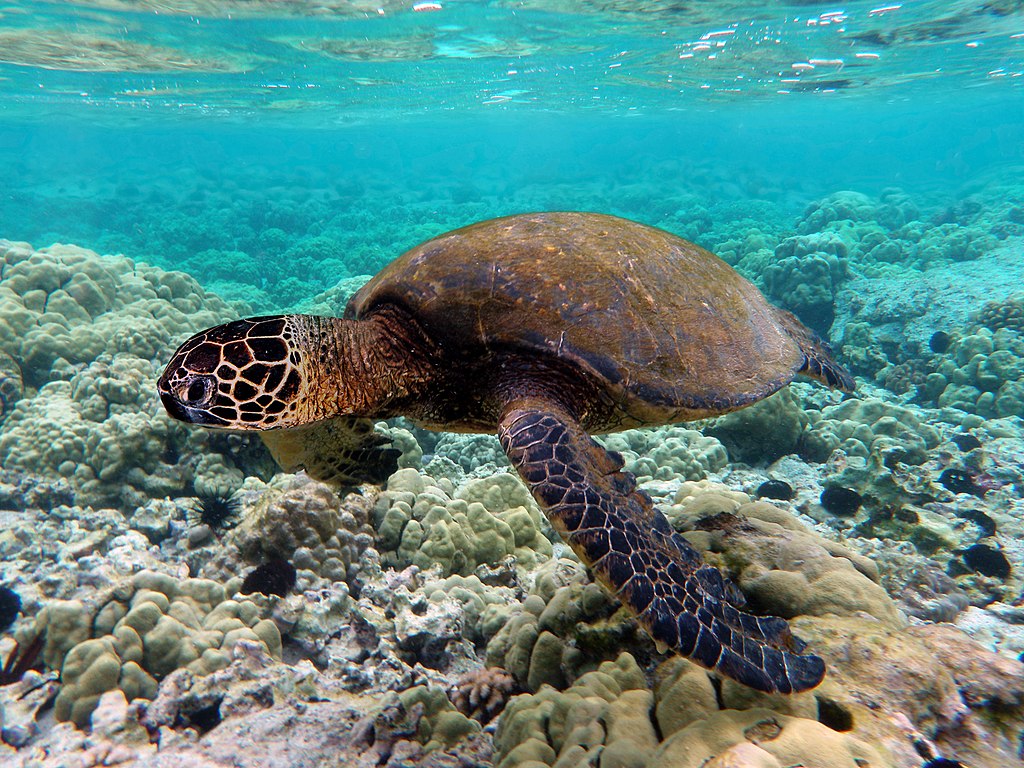 Penyu hijau (Chelonia mydas)
Penyu hijau (Chelonia mydas)
Penyu hijau (Chelonia mydas), or The green sea turtle, also known as the green turtle, black (sea) turtle or Pacific green turtle, is a species of large sea turtle of the family Cheloniidae. It is the only species in the genus Chelonia. Its range extends throughout tropical and subtropical seas around the world, with two distinct populations in the Atlantic and Pacific Oceans, but it is also found in the Indian Ocean. The common name refers to the usually green fat found beneath its carapace, not to the color of its carapace, which is olive to black.
The dorsoventrally flattened body of C. mydas is covered by a large, teardrop-shaped carapace; it has a pair of large, paddle-like flippers. It is usually lightly colored, although in the eastern Pacific populations, parts of the carapace can be almost black. Unlike other members of its family, such as the hawksbill sea turtle, C. mydas is mostly herbivorous. The adults usually inhabit shallow lagoons, feeding mostly on various species of seagrasses. The turtles bite off the tips of the blades of seagrass, which keeps the grass healthy.

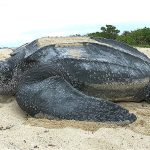
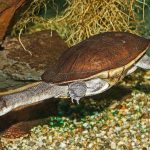

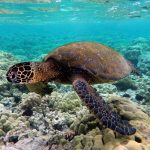
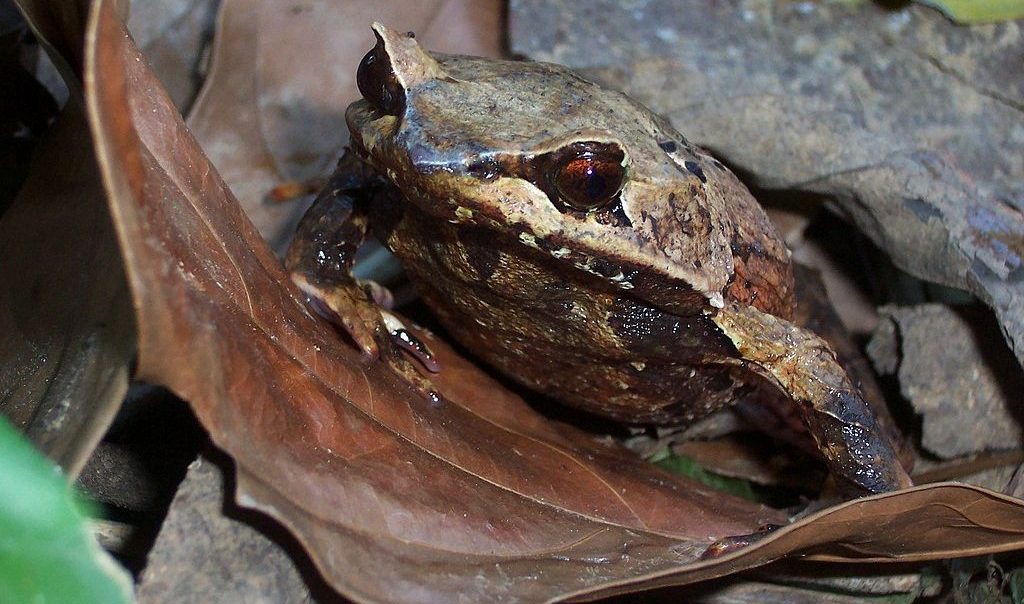 Katak-tanduk jawa (Megophrys montana)
Katak-tanduk jawa (Megophrys montana)
Katak-tanduk jawa (Megophrys montana), or Asian horned frog, horned frog, Asian spadefoot toad, Javan horned frog, Malayan leaf frog) is a species of frog found in Java and possibly Sumatra. Megophrys montana is a relatively large frog: males can reach 92 mm (3.6 in) in snout-vent length and females 111 mm (4.4 in). As their common name suggests, these frogs have “horns”: their upper eyelids have horn-like elongations.
The perfect camouflage of this frog’s color and body shape on the forest floor, making the horned cockroach difficult to spot in the daytime. These frogs often hide under forest litter, and are only active at night exploring the forest floor to the edge of the river. The horned frog tadpole has a funnel-like mouth, usually found in stagnant or less-flowing parts of rivers. M. montana spreads limited to Java, mainly found in the mountains, up to l. 2,000 m above sea level.
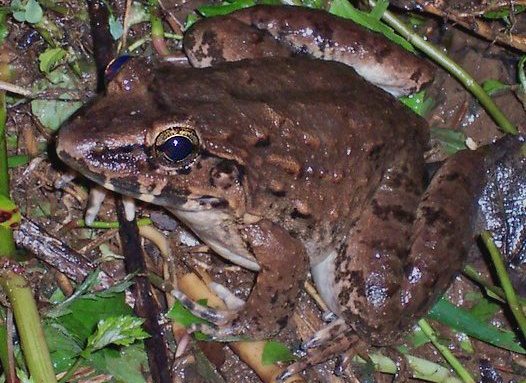 Katak batu (Limnonectes macrodon)
Katak batu (Limnonectes macrodon)
Katak batu (Limnonectes macrodon), or Saklon is a kind of large frog that is often hunted by people for its meat. Its scientific name is Limnonectes macrodon, from the Latin for large-toothed (makros, big; don, tooth), referring to the fang-like bony protrusions of the lower jaw. This frog is also known as bangkong batu (Sd.), stone creek-frog or giant javan-frog.
Frogs are large, stocky, with strong legs and large muscular thighs. Adult frogs are about 70 mm long, but the largest can be up to 150 mm SVL (snout to vent length, from snout to anus). The back is light brown to reddish or blackish, with dark black spots. Black streaks or patches are found between the eyes, on the cheeks in front of the eyes, above the tympanum, on the arms, thighs and calves. Black and white mottled lips.
The skin on the back is smooth, with several longitudinal nodules or bumps. There is a supratympanic fold. In young animals, there is sometimes an inverted V-shaped notch in the middle of the shoulder. The ventral side is pale cream-white, with black spots on the chin. The underside of the swimming membrane is black.

